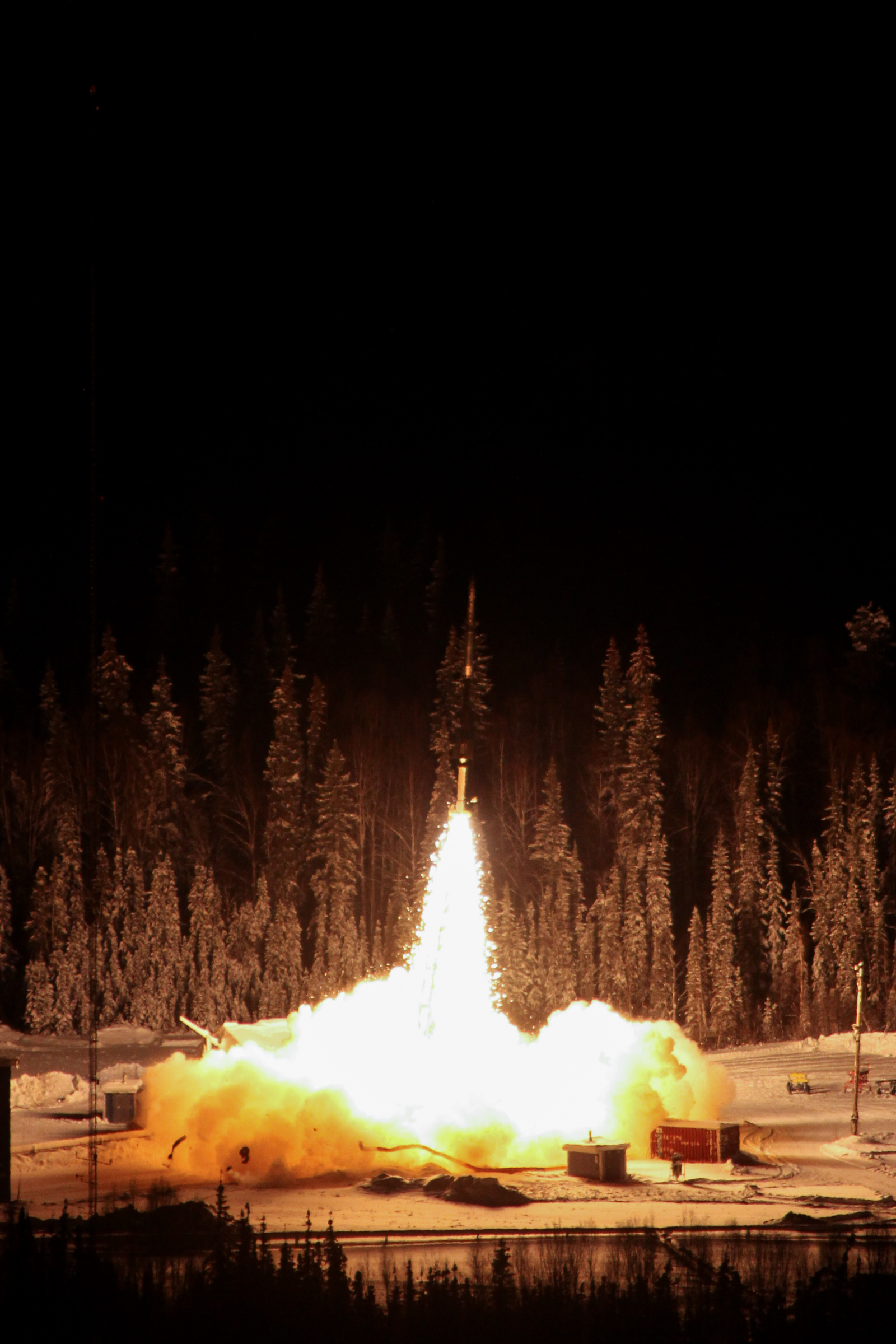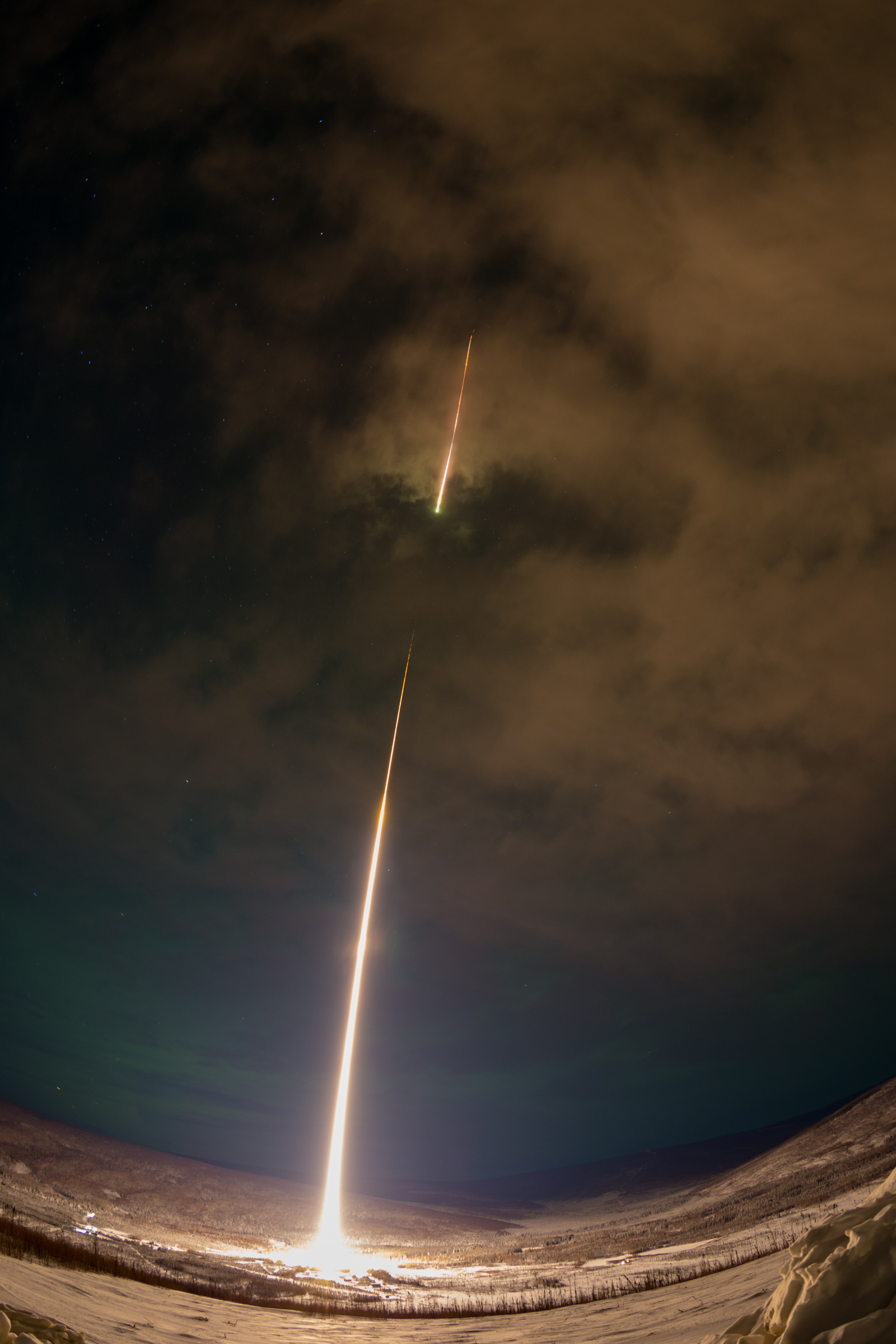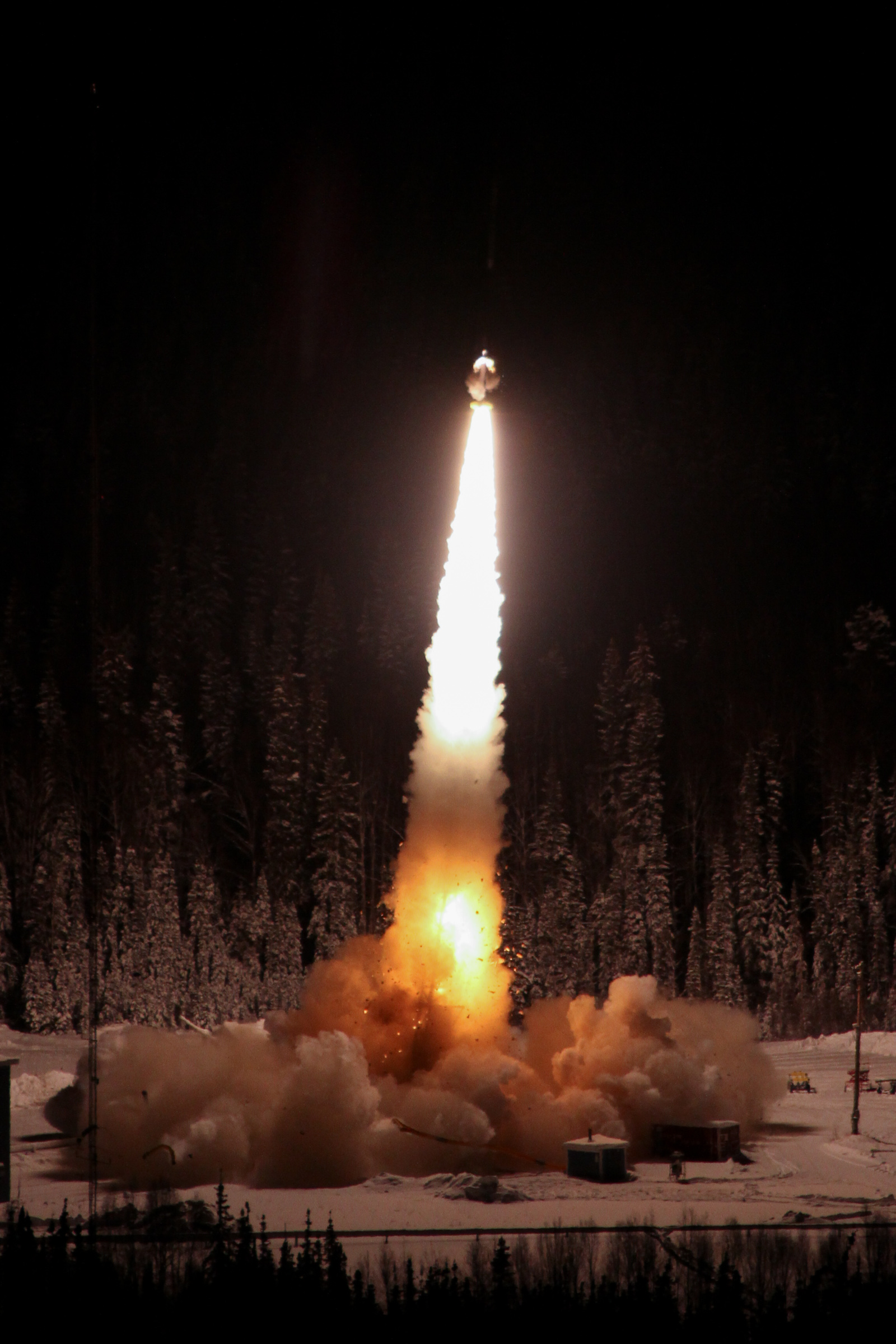Aurora Experiment Streaks Into Alaska's Sky on Small NASA Rocket (Photos)

A sounding rocket flew successfully into the Alaskan sky Jan. 27 to track down nitric oxide, a byproduct of auroras (northern lights) that form in the region.
The Polar Night Nitric Oxide experiment (PolarNOx) lifted off from the Poker Flat Research Range in Alaska and flew almost 176 miles (283 kilometers) high.
The mission's goal was to see how much nitric oxide there is in the atmosphere, and how high it goes. Nitric oxide is generated during an aurora but is not "significantly destroyed" during the polar night, and under certain conditions it could make its way into the stratosphere and destroy ozone, NASA officials said in a statement. The ozone changes could in turn change stratospheric temperature and affect wind circulation on the Earth's surface.

"The rocket team did a great job of pointing us at the star and our spectrograph saw it clearly throughout the flight," Scott Bailey, the principal investigator for PolarNOx from Virginia Tech, said in the statement. "We got plenty of data to work through."
Auroras are created when charged particles streaming from the sun (also known as the solar wind) energize gases in the magnetosphere, which is a region of the upper atmosphere. When the gases release this added energy, they also emit light particles (photons) in specific wavelengths, which are visible as different colors in auroras.

PolarNOx is the first of three missions that will launch from the range between January and March. The others, which will include two sounding rockets each, will further probe the nature of auroras, including "the interaction of the solar wind, the magnetosphere, Earth's upper atmosphere and the structure of the resulting aurora," NASA said.
The other missions are expected to fly between Feb. 13 and March 3.
Get the Space.com Newsletter
Breaking space news, the latest updates on rocket launches, skywatching events and more!
Follow Elizabeth Howell @howellspace, or Space.com @Spacedotcom. We're also on Facebook and Google+. Original article on Space.com.
Join our Space Forums to keep talking space on the latest missions, night sky and more! And if you have a news tip, correction or comment, let us know at: community@space.com.

Elizabeth Howell (she/her), Ph.D., was a staff writer in the spaceflight channel between 2022 and 2024 specializing in Canadian space news. She was contributing writer for Space.com for 10 years from 2012 to 2024. Elizabeth's reporting includes multiple exclusives with the White House, leading world coverage about a lost-and-found space tomato on the International Space Station, witnessing five human spaceflight launches on two continents, flying parabolic, working inside a spacesuit, and participating in a simulated Mars mission. Her latest book, "Why Am I Taller?" (ECW Press, 2022) is co-written with astronaut Dave Williams.









